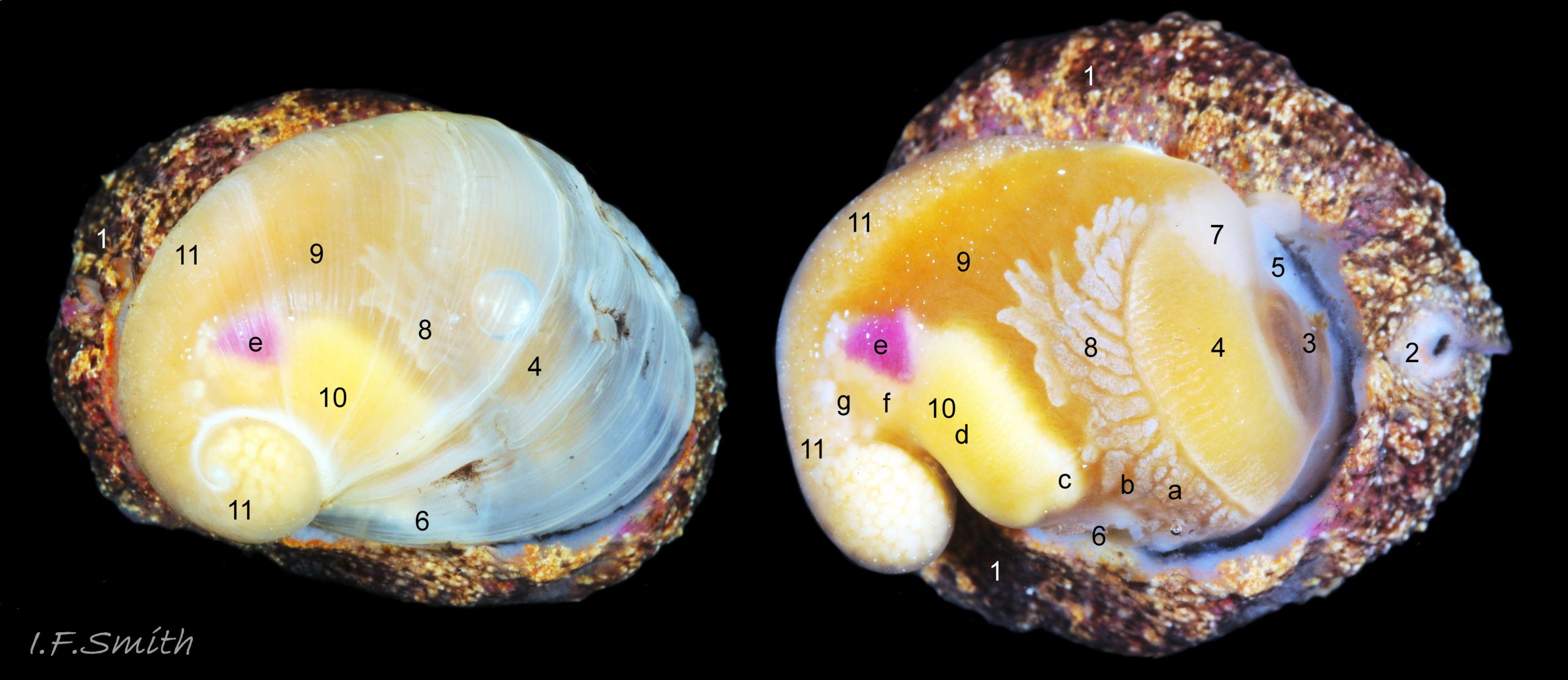Female.
Left: Overlying, fused mantle lobes removed to expose thin, transparent, colourless shell through which several internal organs can be discerned.
Right: Shell removed; internal organs clearly visible through the very thin, transparent mantle.
Items visible include:
1: mantle skirt left after cutting; males will have a large penis below the skirt on the right of the animal.
2: respiratory siphon in mantle skirt.
3: bright orange or brown, bipectinate osphradium that tests the water quality of the inhalent current and, possibly, filters out large debris before the current reaches the ctenidium.
4: large, pale orange or yellow, unipectinate ctenidium (gill) with very long filaments.
5: white, left shell-muscle.
6: white, right shell-muscle.
7: white pericardial sac containing the heart.
8: convoluted hypobranchial gland that shows as a series of irregular white bands on the mantle. It secretes mucus for trapping and cementing particulate matter from the inhalent current before it is expelled.
9: kidney.
10: (in females) oviduct consisting of:
a: genital aperture which penis of male enters, and from which capsules, each containing 1000 to 3000 ova, emerge.
b: vagina leading to genital aperture.
c: white mucoid cells at anterior of capsule gland.
d: capsule gland where capsule is formed around ova.
e: bright purple-pink posterior lobe of capsule gland.
f: albumen gland which produces albuminous fluid for nutrition of ova in the egg capsule.
g: ducts at the rear of the capsule gland receive sperm from the fine tip of the flagellum of the male’s penis.
[ In males of this speies, the prostate gland is a narrow tube, so is not as prominent as the female’s oviduct,, and there is a large penis behind the right tentacle.]
11: ovaries (or testes in males).
The male passes its penis through the pallial oviduct so that the slender distal flagellum (see image 25) can insert sperm into ducts at its posterior.
Length 30mm. Llŷn, Caerns., Wales. March 2016.

